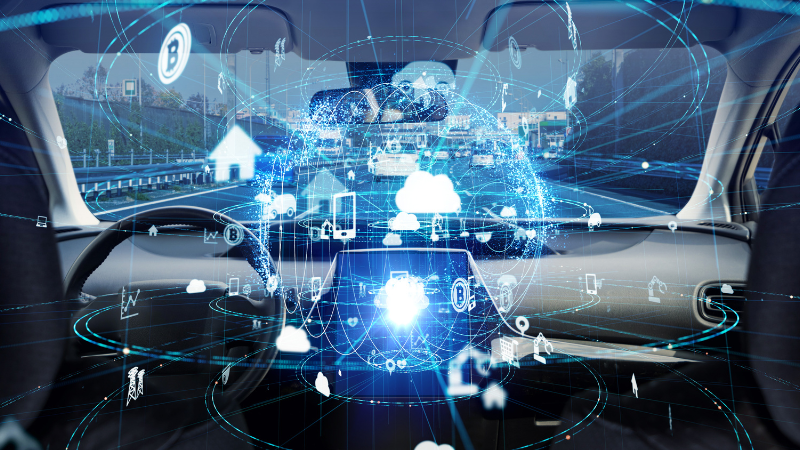
Did you know that autonomous vehicles are already on the road? Yes, while they may not be the full, driverless cars that we all imagined we would be using today from a few decades ago, there are currently five types of autonomous vehicles available in the market – three of which are already being used on public roads! Fully-automated, driverless cars, on the other hand, are still at an advanced testing stage so realistically, human drivers are still needed on the wheels for a few more years to come.
For those unfamiliar with the full specifications of the term, here’s a breakdown of all the different stages of autonomous driving from level one to five and its anticipated impacts on the current job market – after all, the future of jobs is the next biggest worry after consumer safety. Let’s dive in:
1: Driver Assistance
Level one of autonomous vehicles are the most common ones on the road as of now. It refers to cars that utilise assisting systems that enable a share of control between the vehicle and the driver on certain aspects with the human driver still holding the full authority of steering, driving, speed and others.
Some examples of driver assistance include adaptive cruise control, park assist, lane departure warning and traction control. Vehicles and systems in this category are designed to assist the driver not take over so if you find yourself driving a car with adaptive cruise control or driving a vehicle with a lane departure warning system – you're probably in a level one autonomous vehicle.
Though stage one autonomous isn't used in every car on the road, it has however been around since the late 90s.
Fun fact: Mercedes launched a radar cruise control in 1999, which controlled the distance between you and the car in front.
2: Partly Automated Driving
Level two autonomous cars are also on the roads across the world already with the technology in these vehicles being partly automated. Similar to level one above, a driver must remain in control of the car at all times with level two autonomy.
Examples of this are remote-controlled parking an adaptive cruise control. Remote-controlled parking allows the driver to park in the tightest of spaces without using the throttle or the steering wheel while adaptive cruise control changes the speed of the car based upon the speed of the vehicle in front.
3: Highly Automated Driving
Level three autonomy in cars involves a near equal input from both the driver and the vehicle. While it's not fully rolled out on a global scale, stage three vehicles are actively tested on the road and when in full-operation, drivers will be able to enjoy driving 'hands-off' but, not 'eyes-off'.
In theory, in instances like traffic, a level three car with traffic jam assist will be able to help take charge of the functions of the vehicle from the driver. The perfect use for stage three autonomous cars is if you, the driver, employs a 'hands-off' system every now and again to say check on your kids at the backseat during traffic.
Fun fact: both BMW and Mercedes are aiming to have stage three products on the market by 2021. Meanwhile, according to Audi, the 2019 Audi A8 is said to be a level three autonomous vehicle.
4: Fully Automated Driving
Level four autonomous cars are the last of the stages where a human driver is needed – and only just about! According to government research, stage four fully automated driving will be able to deal with most situations on the road while driving themselves.
In other words, level four cars will be in charge of all driving functions without needing the driver's input, attention, intervention or action. Though there is no level four cars as of yet, drivers in the future will be able to hold meetings, eat and even take naps in cars as they travel from one place to another.
5: Full Automation
Level five of autonomous cars have the highest and most significant point of automation. Here, the vehicle will have full control of the speed and direction without the need of a steering wheel, a driver or a driver's license. As a matter of fact, anyone travelling via a level five car will be considered as a passenger – completely negating the use or need of a driver in the future.
To most of us, the idea of autonomous driving is rightly terrifying and, for those of you who actually enjoy driving, the thought of a level five autonomous vehicle really doesn't sound that appealing.
What does the future of jobs look like with autonomous cars?
The common assumption on the impact of employment when it comes to autonomous vehicles is that it will end various jobs in society and while this is undeniably true, studies show that autonomous cars have the potential to innovate the industry and create new job roles.
Aurora, a start-up working on self-driving cars founded by veterans of Google, Uber and Tesla, expanded from a team of three to more than 150 people across multiple facilities working with traditional automotive companies like Hyundai, Byton and Fiat Chrysler Automobiles.
Elsewhere at Aptiv, formerly part of Delphi Automotive, the now-defunct and former supplier for General Motors focused on creating self-driving, connected vehicles now plans to add around 6000 more employees in several locations across California – that’s 6000 more jobs in relation to autonomous automotive! And the result so far is positive as the global autonomous driving job listings have steadily increased in the last few years, rising by 27% year on year.
So yes, while the fundamentals in the nature of work may change, humans and autonomous machines will collaborate to continue to drive entrepreneurial innovation. As we move further towards the digital age of automation and hyper-connectivity, the automotive industry will without a doubt, still require input from the human element – from design engineers to developers to automation managers.
Read How To Earn More As A Mechanical Engineer.





